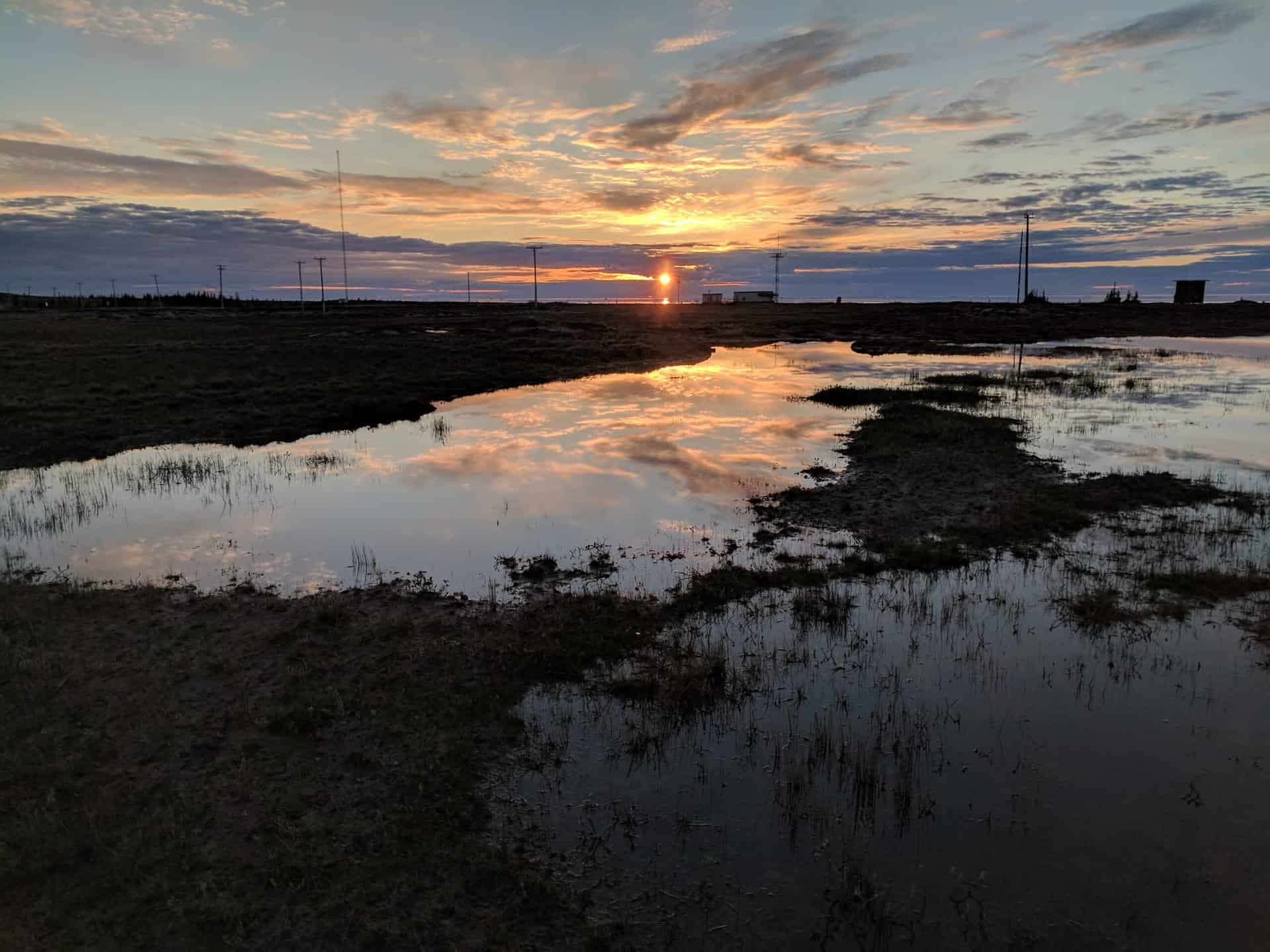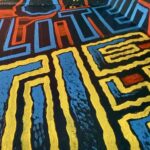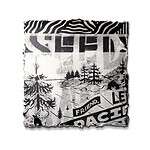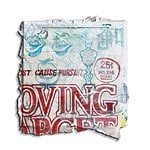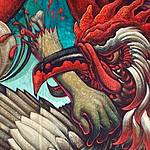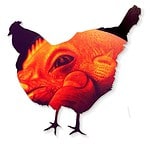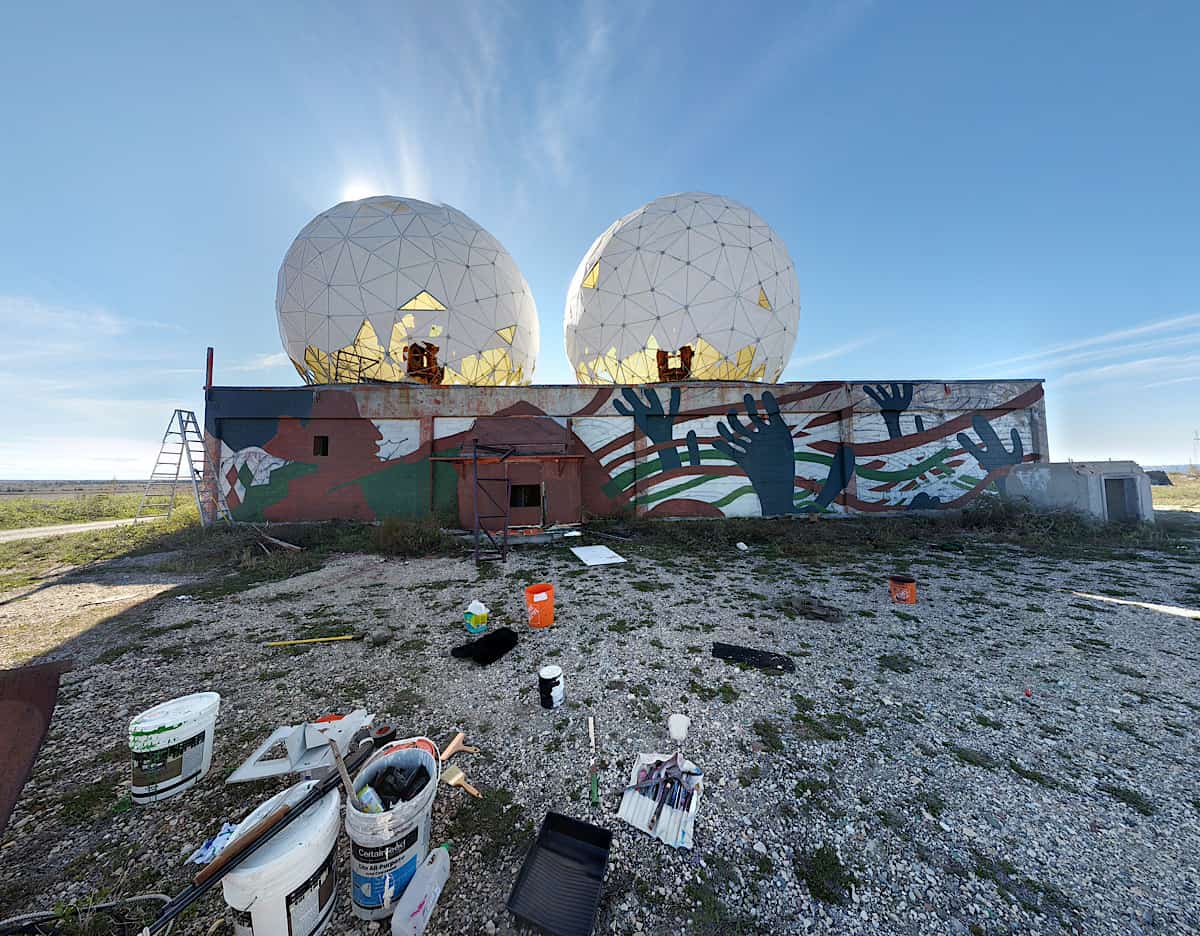
SeaWalls Churchill mural: Sayisi Dene Camp 10
I fell in love with Churchill (Manitoba) as i first stepped off the plane onto the southern edge of Canada’s arctic wonderland, surrounded by three distinct eco-zones: arctic marine, arctic tundra, and boreal forest.
Most people know and love Churchill as being ‘polar bear central’. It is an internationally renowned place for adventure travel and scientific research. Arctic wildflowers, plants, migratory birds, foxes, caribou, snowy owls , harbour seals and WAY more beluga whales than you could throw a stick at.
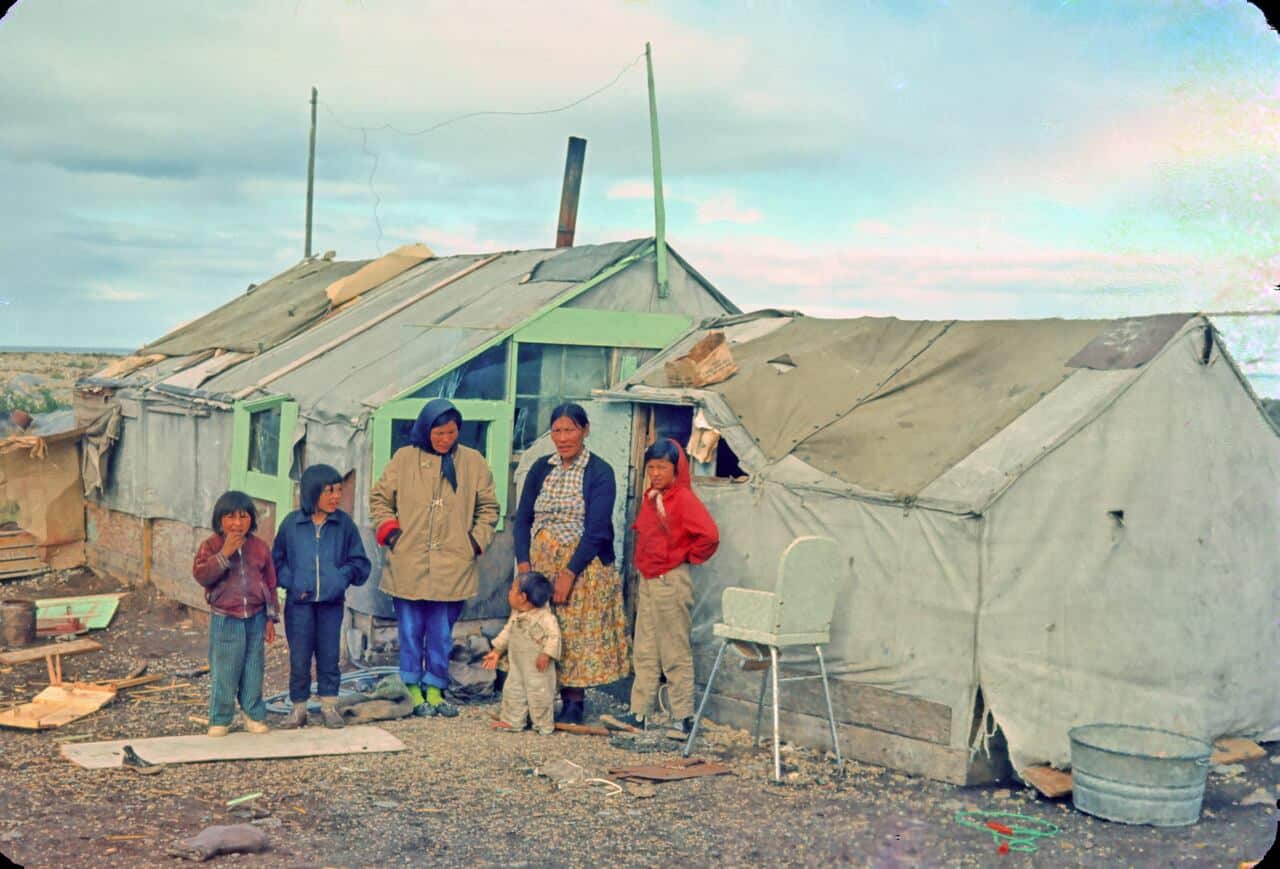
SAYISI DENE — PEOPLE UNDER THE SUN — ᓴᔨᓯ ᑌᓀ
For a short and tragic period, Churchill was ‘home‘ to the most eastern of all Dene peoples, the Sayisi. They are also known as the ‘People under the Sun’, or ‘People of the East’. At that time, they were known simply as the “Churchill Indian Band”.
In 1956, the Feds (with strong UN encouragement) forcibly relocated the Sayisi from Little Duck Lake to Churchill. This is considered one of the most egregious ‘errors’ committed by the Canadian government, whose track record already speaks loudly for itself.
By 1973, 117 of the original more than 250 relocated members had died. They lost their spiritual, emotional, and physical identities, notably due to alcohol, abuse, and despair. The Sayisi community still feels the horrific effects of this time, now relocated near Tadoule Lake.
[Carl MacKenzie took the above photo between 1959 and 1961. It, along with many others, captured the plight of the Sayisi Dene undergoing extreme poverty and despair.
The residents constructed their dwellings, including this one in Camp 10, with materials found in the garbage dump, resulting in poor construction.
If you’ve ever been to Churchill, you’ll know that conditions, especially in winter, are brutal.

CAMP 10
At first the community members lived in shacks and tents but were then moved into a government-built homes in an area called Camp 10. Before being forcibly relocated, the Sayisi Dene made a point of keeping their shelters away from their cemetery because it was a cultural taboo, but Camp 10 was on barren tundra squeezed between the Arctic Ocean and the Churchill cemetery.”
– Kelly Malone
Follow this link for an excellent synopsis of this tragic tale, in a seated position ideally.
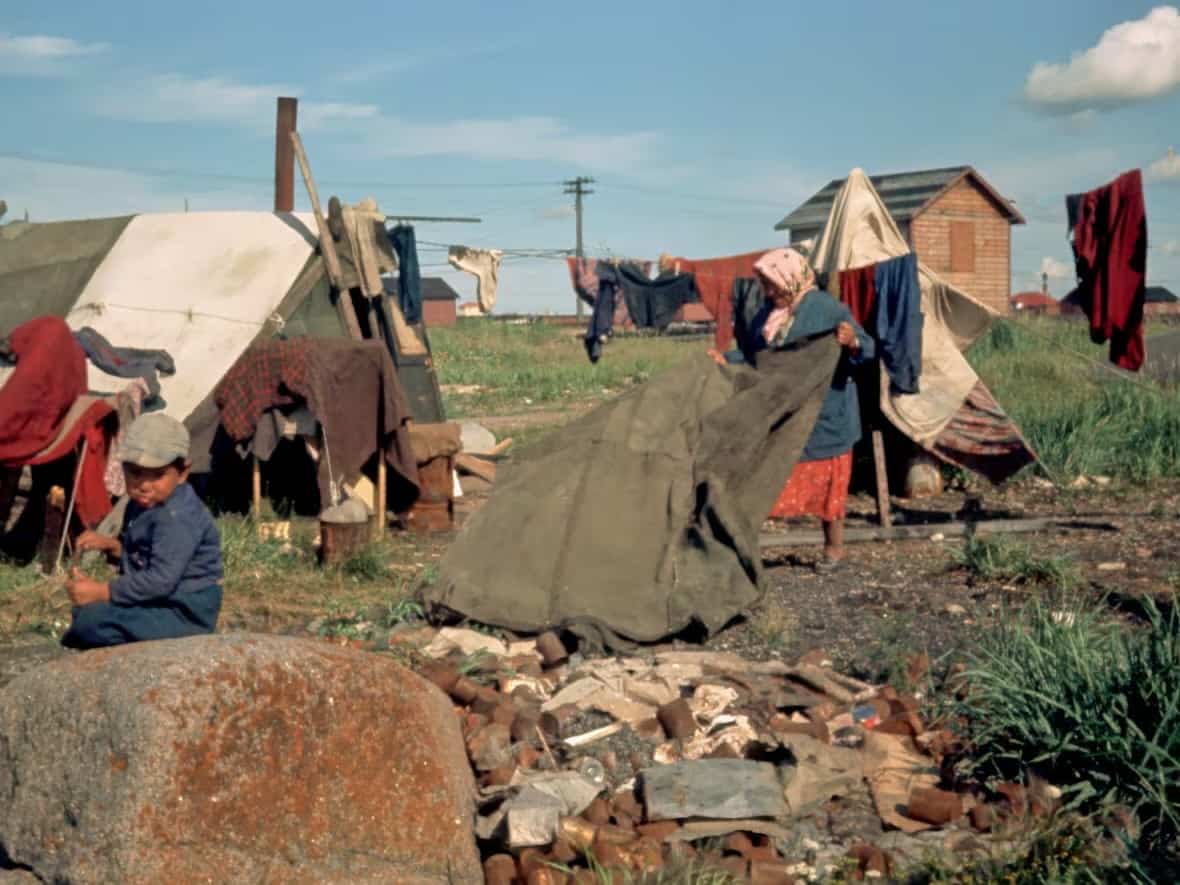
Art as communication
Reading the article above, it’s sobering to contemplate the potent potential of images to cause change. Art has an intrinsic capacity to shift and the ‘culture of opinion’. This is the glue that holds it all together, like the interconnected fascia of our bodies.
It’s hard to contemplate. A simple black and white photo of caribou carcasses sparked a series of choices that nearly wiped out the Sayisi Dene in one cruel stroke.
Art is fundamentally a tool of communication. Art carries great responsibility depending on the artist and the intention behind its use.
“What most of us must be involved in–whether we teach or write, make films, write films, direct films, play music, act, whatever we do–has to not only make people feel good and inspired and at one with other people around them, but also has to educate a new generation to do this very modest thing: change the world.”
Howard Zinn, Artists in Times of War and Other Essays
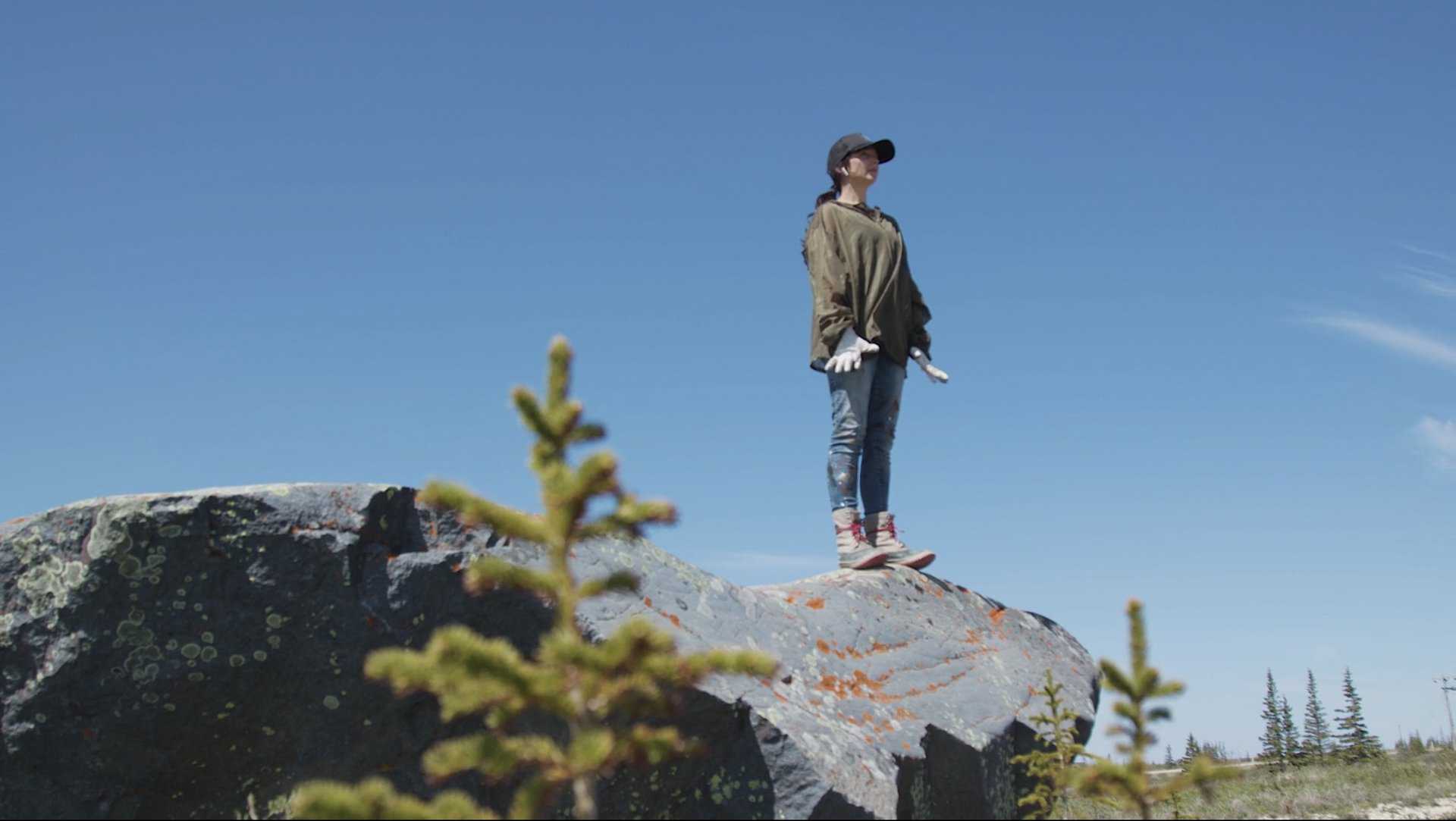
“paint with a purpose”
Paint with a purpose. The motto of the PangeaSeed Foundation.
Kal Barteski sure does, having brought the entire Churchill project to life.
As passionate about polar bears as she is about painting, she is truly a creative force of nature. Kal’s life journey can only barely contained by a shallow title such as ‘artist’.
SeaWalls CHURCHILL was created in partnership with the PangeaSeed Foundation. It aimed to educate and inspire an ever-growing community of people increasingly eager to protect water.
However, what transpired was more powerful. It became a story about healing, in a devastated small town on the edge of the Arctic. This is the result when a community is reminded of its inherent value and worthiness in the world.
I was extremely fortunate to have my son, Sebastian, join me on this project. You’ll see his handsome face in the gallery of photos. He’s officially the youngest team member in the history of SeaWalls, responsible for food truck shenanigans and underaged driving.
Hawaii-based artist Kai (KAI’ILI KAULUKUKUI) painted the side wall of this building. He’s a dear friend and long-time PangeaSeed production coordinator. Kai painted a portrait of the man that sat with us every day while working. His job was to hold the shotgun, in case a curious bear approached the site. Safety first.
The mural features stylized caribou antlers, carried away in a river of ‘ribbons’. They stream like locks of braided and coloured hair from the main figurative element. Skeletal hands, held up in prayer, adorn the side of this bizarre structure—a long-abandoned radar research facility from the ’70s.
On this wall I painted a quote from Elder Betsy Anderson (Tadoule lake, MB):
“There was a time when all the people and all the animals understood each other and spoke the same language.”
“Yanízį Denesųłiné spechu tįch’adíe įłághe yati hot’a ʔełnedárení hél tth’i ʔełedárí tth’agh nisnį.”
MORE…
Please reach out if you’d like to hear more about this project. I’m always talk shop about these subjects..
Even better, find Kal. She’s the boss.
I woud HIGHLY recommend you check out the video posted below, from Handcraft Creative.
it tells a gorgeously textured story about the festival from the beginning. From flooded railroads into the heart of this incredibly unique northern community.
Most importantly, check out the Sayisi Dene First Nation Relocation Trust, adding very compelling detail to this story.
